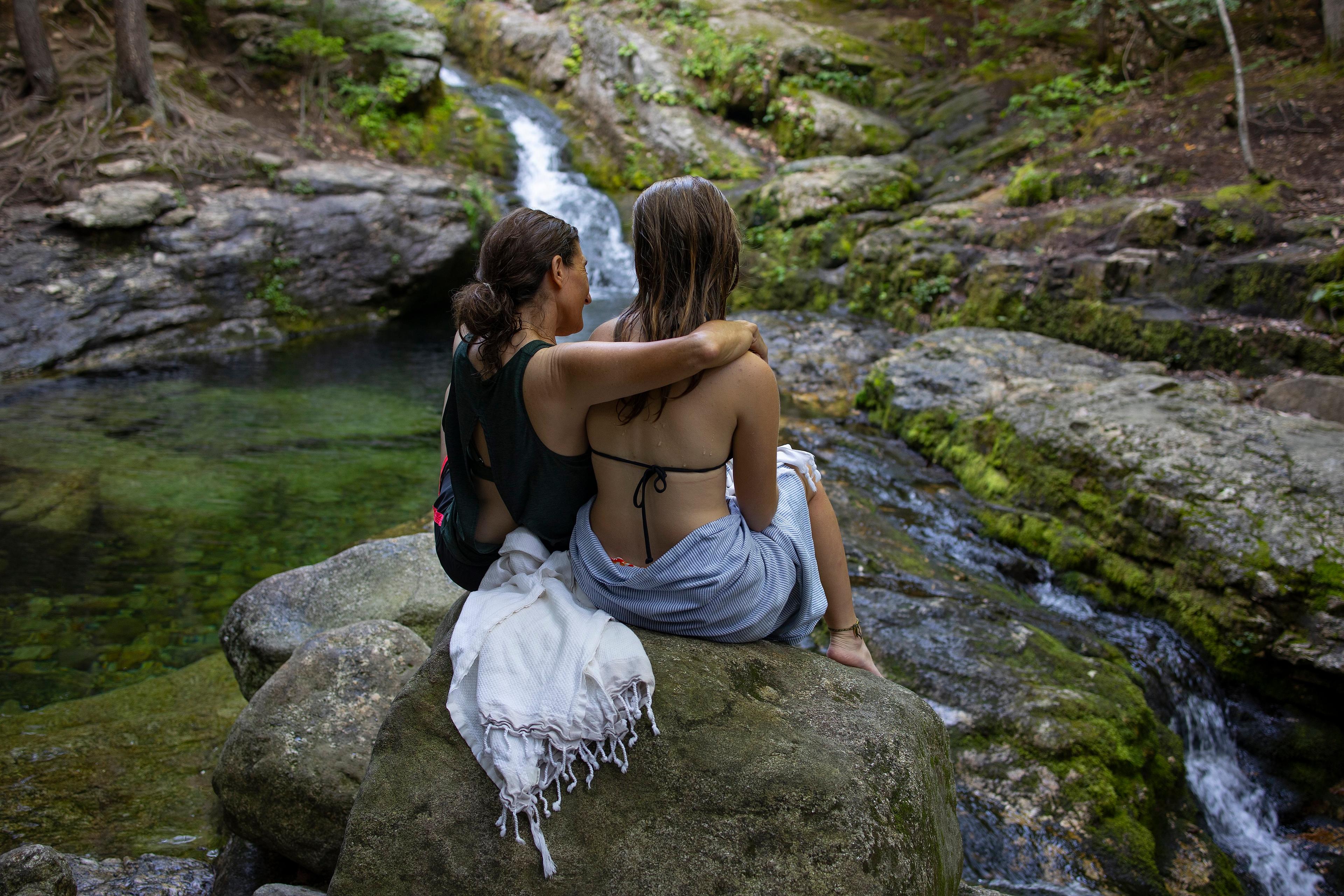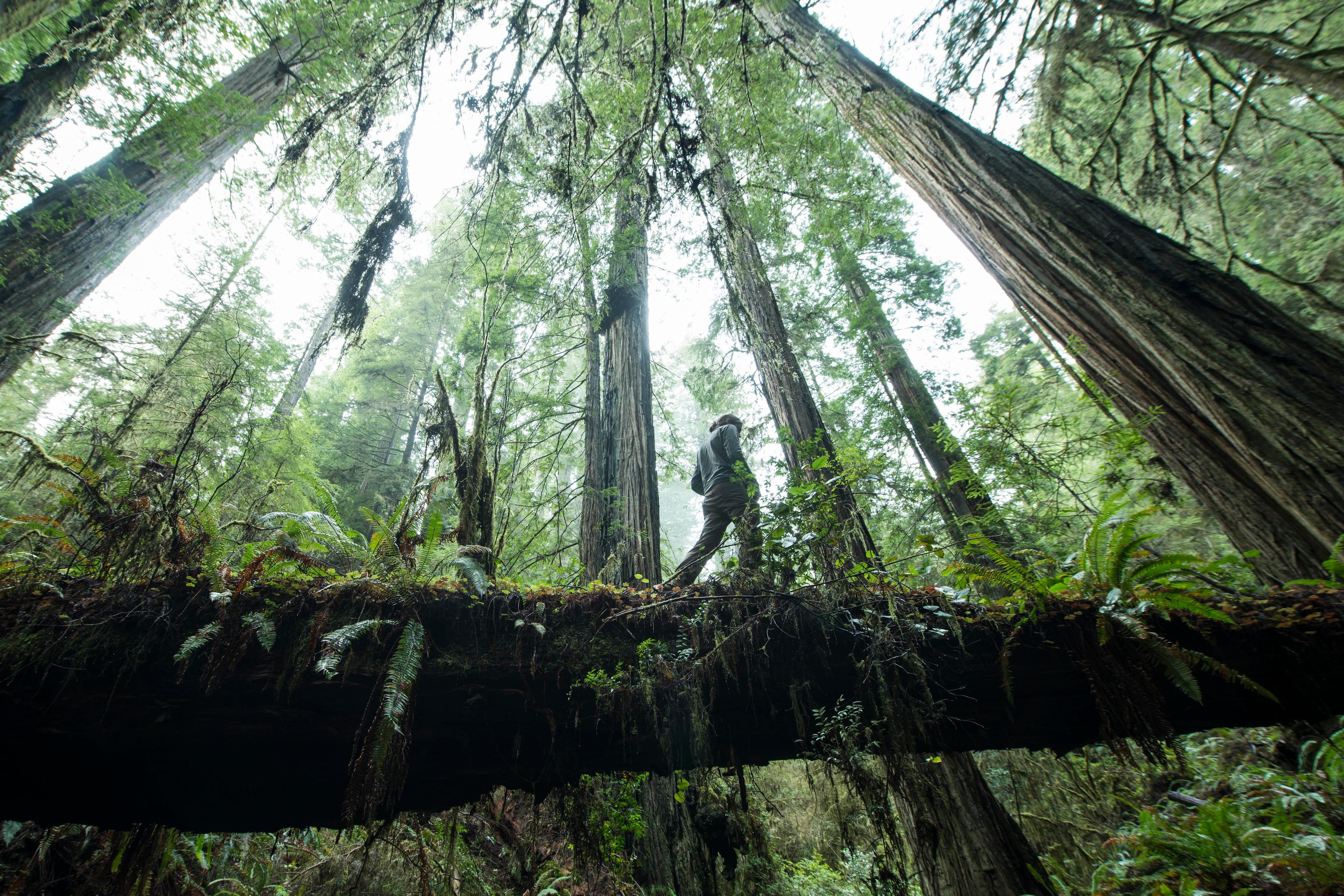I remember the first tree I loved as a child, an ash in my backyard. I leaned against it to count to 10 for hide-and-seek, I sat under it when I felt tired, and my dad built me a treehouse in it from which to survey my domain. The tree provided piles of autumn leaves to jump in, sharing its bounty into the early days of winter.
Children are often encouraged to make strong connections with trees. In Jill Neimark’s book The Hugging Tree (2015), for example, a resilient little tree growing on a sea cliff is adopted by a little boy who helps the tree after her roots are damaged by a storm. He brings soil and flowers, but also people who enjoy the tree. It’s a mutual friendship that relies on what the boy and the tree can share.
That affinity for individual trees doesn’t leave us as we become adults – it just takes a different shape. Trees anchor us to place, like the roots of trees themselves. My mom remembers the mango tree she had in her backyard when she was growing up in Suriname, and how her family would eat so many mangoes that they got sick. That mango tree is a marker for her childhood home, even though she has lived away from Suriname for most of her adult life. My childhood tree anchors me to a home that is no longer owned by our family. Even if the current resident has cut it down, I still have many fond memories of it.
Trees endure, and because of this we plant them to mark specific events – a birth, a death, a marriage. We plant them for privacy, like the Douglas fir in my yard that fills a gap along the fence with the neighbours. We plant them to lay claim to our land, to reforest that which has been deforested before us. We have several such trees in our yard: the walnut we planted to replace the cedar we had to cut down; the cherry tree whose flowering marks the beginning of spring and the gardening season; and the deodar cedar planted for the first wedding anniversary we spent here. We have planted more than 20 trees since we moved in, making up for those lost to the indiscriminate land-clearing of the previous owners.
The endurance of trees exists in sharp contrast to our relatively short lives. Consider Methuselah, a bristlecone pine in California that, at 4,850 years old, is the oldest living tree in North America. It has persevered through several lifetimes of heatwaves and droughts, floods and cold weather. Or the hibaku-jumoku trees in Hiroshima, which survived the atom bomb blast in August 1945 and continue to flourish today. We can learn about resilience from these trees: how to survive, how to adjust to change, and how to be flexible when our growing conditions aren’t quite as good as they could be.
Resilience and endurance can also be seen in mutual relationships between trees and people. For example, on the west coast of Canada, the Haida, Tlingit, Tsimshian and Nuu-chah-nulth (Nootka) peoples rely heavily on the Western red cedar in the coastal temperate rainforest as a resource, but they don’t always cut down the trees to use them. Instead, they harvest fibre to make capes, hats and baskets, and can even harvest boards, while leaving the tree standing and alive, ready for future use. They have learned over centuries that leaving culturally modified trees standing is best not just to harvest future resources, but for the tree itself.
Some trees are less resilient. Across North America in the 1950s, chestnut trees virtually disappeared in response to chestnut blight, and more recently the emerald ash borer has devastated ash trees. In western Canada, the expanding mountain pine beetle epidemic has decimated swaths of montane and boreal forest. I have stood in a beetle-killed pine forest and marvelled at the change in tree canopy now opening up to the sky. Over decades, individual dead trees fall as they decay, if wildfire or forest harvesting doesn’t get to them first.
Trees also die when acres of them are cut down during logging by an industry with little concern for biodiversity, carbon emissions or the climate crisis. These trees are not revered as individuals, but rather are seen as anonymous forest blocks of sellable product. Here in British Columbia, the provincial government has come under fire for continuing to cut old-growth trees when we have so little of them left and they store so much carbon. Protestors have been arrested in their hundreds for sitting in trees and blocking logging roads, trying to save the old growth that remains. This mentality of trees as a resource rather than as individual entities with a right to exist is dangerous for trees and humans worldwide.
Trees can be a natural focus for meditation. Focusing on an individual tree can lead us to transfer our regard from what we want and need as humans to an awareness of what trees also want and need. On Haida Gwaii, off Canada’s west coast, the Haida Nation revered a golden spruce called Kiidk’yaas, which means ‘ancient tree’ in the Haida language. Focusing on individual trees makes us wholly present, the opposite of scrolling on our smartphones, and reminds us that, like humans, trees too have the right to exist.
Why are we drawn to individual trees? Perhaps because they are manageable and understandable. As Paul Kingsnorth writes in Confessions of a Recovering Environmentalist (2017): ‘We live by the small things: the things we can control or experience personally.’ As a child, I was able to control my small universe centred around that backyard tree, and as an adult I have control over which trees I use to reforest my property and create habitat for birds and other animals.
We can even connect with trees we don’t really like. When I lived in southern Alberta, we had two cottonwood trees that produced many sticky yellow seed pods, and which sent roots into the raised garden beds. The dogs would track the pods into the house, leaving yellow marks on the floor, and the roots would steal moisture and nutrients from my vegetable plants. But the trees also provided shade from the harsh prairie sun.
We connect with some trees more than others. Just look around. Are there any trees that are particularly interesting in shape and size? Ones that call to you, that ask to be touched or to be stood under?
This past year, during the pandemic, life has been radically altered; but perhaps on your travels through your city, masked and avoiding crowds, you’ve connected with a specific tree. Perhaps you can befriend a tree on your lunch break, one you can sit under to eat and feel calmed. Think of this tree as a new acquaintance – get to know its bark and its leaves, the roots that snake along the ground. Consider how it changes with the seasons – is it deciduous or coniferous, growing leaves in spring or putting on new needle growth? Touch it, smell it, look carefully at the other species that colonise it: ants, ladybugs, birds. Find out where it came from – was it planted by the city, a standard tree plugged into a standard hole a standard number of feet apart? Most of all, be with it. Take the time to sit under it or stand next to it and really see it for what it is. Can you hear the breeze rustle through the leaves? Can you see the top of the tree from the ground or is it too tall and bushy? What debris does it rain down on the ground beneath it – cones, pods, seeds, leaves? Keeping up the relationship will entail new discoveries over time. Eventually you’ll see the tree as an integral part of your life, as a friend and even a family member.
However or whyever we connect with trees, that connection has proven to be invaluable not just for our own wellbeing but also for the trees. When a massive windstorm levelled 41 hectares of trees in Vancouver’s Stanley Park in 2006, locals were devastated by the desecration. They donated funds to help restore the park and came out in droves to plant seedlings, ultimately leading to more than 15,000 new trees and shrubs.
Trees need us as much as we need them. As the scientist Stephen J Gould wrote in 1991: ‘We cannot win this battle to save species and environments without forging an emotional bond between ourselves and nature as well – for we will not fight to save what we do not love.’








